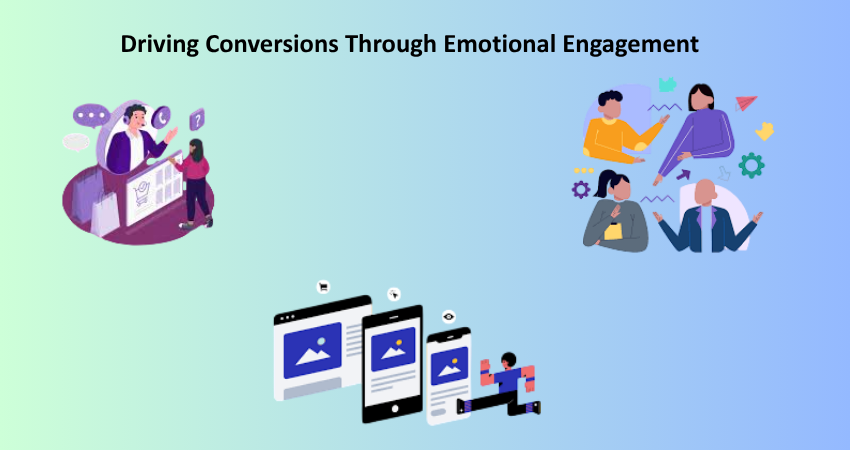
Introduction
Microinteractions, which in essence are the subtle momentary events of engaging with a website or app, have found recognition even in e-commerce, where giving experience (UX) importance has often tipped the scales for sales. Whenever the user engages with a website, there are little design elements such as button animations, hover effects, loading indicators, or feedback messages that enhance usability and give a little bit of character back into a website. These might look like minor details; however, viewed in totality, they can make a huge difference in the user journey.
Microinteractions, where every passing second on the platform and every click can be decisive in purchase intention, are no longer mere visual dazzle but are instruments guiding users, providing feedback, and enhancing brand identity. Microinteractions, when designed with thoughtfulness and care, can enhance user satisfaction while decreasing friction at a critical moment in the checkout and bringing back customers. Today, when the audience is more sophisticated with expectations for smooth online experiences, microinteractions become a usable point of differentiation that feels responsive, smart, and entertaining.
Enhancing User Engagement Through Interactive Feedback
Encouraging User Confidence During Navigation
They are pretty much the thing that makes users feel in control when they are using an e-commerce application that happens to be a little more complicated. For instance, indicating the selected tab, animating a cart icon while throwing something in there, or changing the button color on hover is pretty immediate, intuitive feedback-in fact, that’s like the minimal possible thing you would expect-for example, that you have a responsive site, confirming an action taken by the user.
It creates an impression of control so that people would probably become more confident about interacting with the site. With every click and every input that confirms the action, users are likely to surf along the products and engage more with features like wish lists, feedback, and of course complete the purchases. These little feedbacks, therefore, serve micro-reassurances-gently steering the user through the site without too much friction that would otherwise cause abandonment or confusion over the things that they might want to purchase.
Making User Flows More Intuitive and Efficient
Any virtual market’s process of discovery to checking out should touch lightly in the air under the wings of simplification. With just a set of microinteractions, these user processes can gain tremendously, receiving visual indications for steps, transitions, and statuses. A good example to quote is progress bars during checkout or some visual indicator when a coupon code is successfully applied, thereby preventing a sheer world of confusion and making sure users are aware at every step. These tiny visual responses keep frustration at bay and work toward preventing any imminent user drop-off during a transaction.
At the same time, microinteractions additionally aid ease repetitive actions or clarify more complex sets of functionality. For example, the use of autocomplete suggestions in search bars, live validation in forms, or real-time updates on shipping options creates the impression that the interface is intelligent and based on users. They aid in uniting a static interface with the dynamic expectations that users carry from modern-day digital experiences. And with e-commerce becoming battle after battle for the next prize, smart feedback in micro-moments is key to upgrading the empty user journey into an efficient and maximally delightful journey.
Strengthening Brand Identity and Personality

Reinforcing Consistent Design Language
Microinteractions specifically help reinforce a brand identity through the movements, sounds, and visual styles they are able to convey. An add-to-cart animation with a little cheeky bounce can create a fun feel and also cater to a more youthful aspect, while something much smoother and simple like a fade would come off as more sophisticated and modern. Through such little involvement in the interface, an eCommerce brand might create a memorable, cohesive experience which speaks directly to its audience.
On the user’s side, a series of consistent microinteractions should, over time, produce an acquaintance with the interface of the website. When the predicted animations and their feedback match the voice adopted by the brand, it leads to easier navigation on whatever site, thus contributing to reducing the cognitive load of a user. This creates trust in a city and makes it look more professional. The most important step in creating elegance through microinteractions is consistency in the application of design language, which not only makes the interface aesthetically pleasing, but also creates an entire experience of trust and refinement while shopping.
Differentiating the User Experience From Competitors
With so many competitors in e-commerce nowadays, differentiation is the name of the game, and this is where microinteractions can be designed as an interesting differentiation tool. While many sites seem to sell the same products and share a similar basic layout, it is the uniqueness of a microinteraction that introduces a sense of personality and emotional appeal that differentiates the website. From cursor animations to welcome messages gliding across the screen, all those tiny design cues combine to express a sense of uniqueness and brand authenticity imprinted in the memory of an end user.
When a microinteraction matches a brand’s core value and corresponds to audience preferences, then it becomes part of the overall storytelling strategy. For example, a more sustainable approach may feature carbon-related icons and animations when the user selects eco-friendly packaging, reinforcing brand alignment and user satisfaction. These cute little things are not just entertaining; they also mass-market the brand and enhance the overall perception of the e-commerce experience.
Reducing Friction and Enhancing Usability
Providing Real-Time Error Handling and Input Validation
After all, one of the most irritating things for users is submitting a form or attempting a checkout and coming to encounter them with only a vague message afterward. Microinteractions can provide immediate feedback while users are working within input fields to mitigate such issues. A little green checkmark might appear when the email address is correctly formatted and a warning icon might light up in red letting them know that some required field has been omitted. Such immediate visual feedback keeps users informed and help reduce the chances of errors enlarging into impediments.
Real-time validation helps usability while lowering cognitive load. The users do not have to guess what they did wrong or scroll back to find an error-they are guided while there. Thus, fewer will abandon forms; thus, the experience will be even more rewarding. Whenever microinteractions make problem-solving easier, they ensure a smooth path, thereby keeping users focused on completing their purchase.
Smoothing Transitions Between Different Sections
According to the article, transitions are found so important by the users in understanding navigation on a site. Without any visual cues, a user can be confused on his mobile device because an abrupt change or reloading a page is very limited in the amount of screen space it can use. Microinteractions such as sliding to another category or fading effects during gallery switches smooth the transition. Therefore, the above design elements help the user stay connected and grounded in the navigation flow.
These transitions also reduce the time taken to wait, which is crucial for retaining the information that has been stored by the users. Studies have shown that those using visual feedback on such loading skeleton screens, animations, or progress indicators stay attached. The tiny gestures assure a user that the whole system is working well and therefore sort of reduces a little bit of frustration and impatience whenever they don’t have a smooth shopping experience, be it in an online shop or a supermarket. These microinteractions would lend themselves towards a more continuous shopping experience and would indirectly be reflected in the conversion rates.
Driving Conversions Through Emotional Engagement

Creating Delight Through Animation and Motion
Microinteractions are capable of awe-inspiring delights. Maybe a happy animated movement when an item is added to a cart, or maybe the sound of success when the transaction ends, can stir piquant emotions. These little nuggets make an otherwise ritualistic task interesting, enhancing the user-brand bonding experience.
The more pleased a user is when interfacing with a website, the more likely he will come back to it for repeated purchases. Emotional engagement is, after all, a vital fabric that cuts across loyalty for a brand. Microinteractions are the best ingredients when seasoning it into a favorable recipe. They keep the digital experience feeling more human, personable, and interactive, which is most important in e-commerce since it has no face-to-face customer interaction.
Encouraging Micro-Conversions and User Retention
Above and beyond that immediate sales, e-commerce has its success built on the next level of features, which ultimately lead to lifetime value. Microinteractivity leads users to micro-conversions-small things like signing up for a newsletter, adding things to a wishlist, or sharing a product on social media. For example, hovering over the wishlist icon triggers a subtle animation or a tooltip explaining the benefits of subscribing could ultimately happen to inspire people to take that one last step.
These minor activities gather quite a flying momentum towards the future-buying path and associated loyalty to the brand. Microinteractivities have quite an indication of engaging larger strategies, all of which are friction better reduced and made to feel easy. It helps in greater user retention leading to more meaningful data collection and increases customer lifetime value when users are subtly encouraged to interact a bit more with the platform.
Conclusion
These microenvironments are in fact very small, but they are very capable of greatly affecting how customers appraise a shopping experience online. They engross the customers in an experience, reinforce a brand, minimize usability shortcomings, and facilitate an emotional journey through which purchases may represent an even interactive-level experience. When everything counts in clicks and seconds, microinteractions act like invisible guides for the users to navigate and understand the shopping experience while enjoying it.
With growing expectations and cut-throat competition, microinteractions can no longer be afforded by e-commerce businesses as something which is craftily done by design. Yet subtle, such elements are core to effective digital experiences that are intuitive, efficient, and memorable. Embedding such microinteractions smartly across an e-commerce site can greatly enhance the user journey by designers and developers towards creating brilliant impressions that turn accidental visitors into lifelong customers.